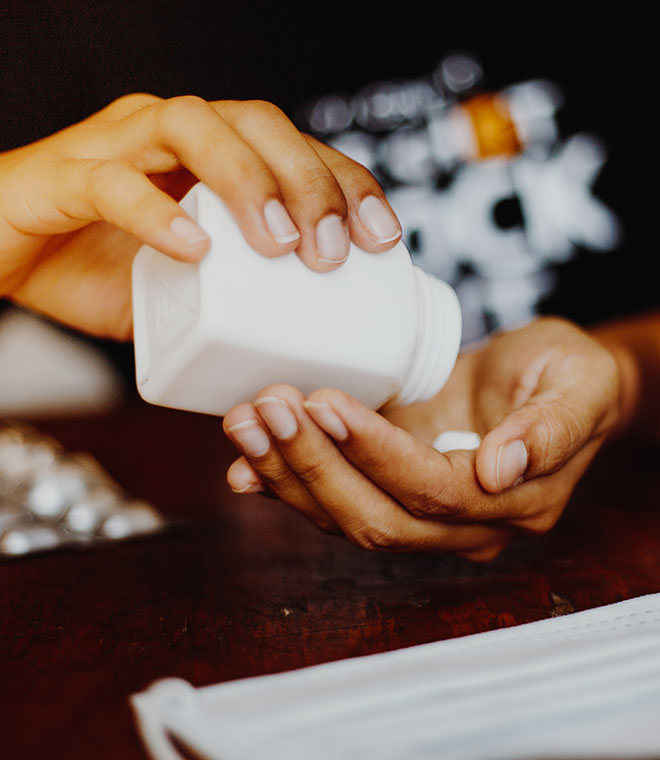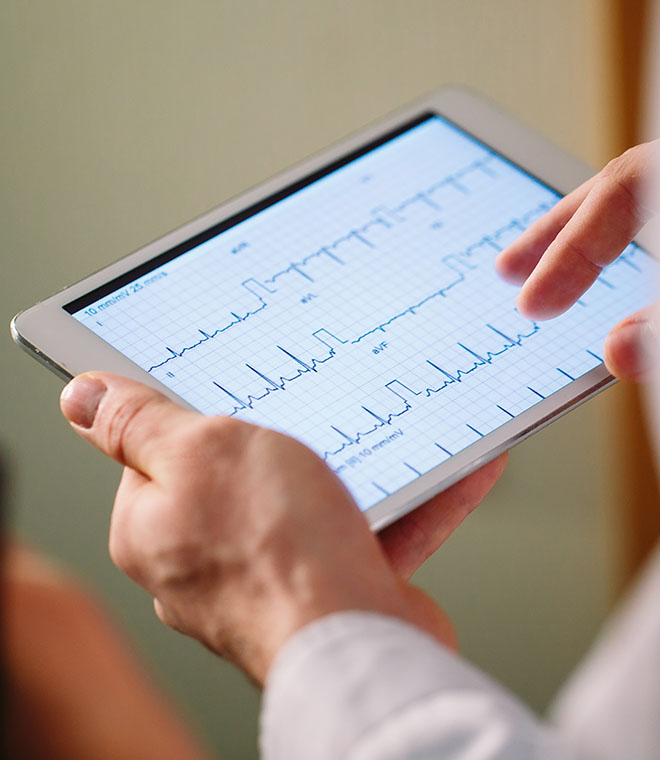Health
Heart arrhythmias: Causes and treatments
By Jean Cherry, RN, MBA Dec 21, 2020 • 6 min
Your heart is an amazing, muscular pump that moves blood throughout your body by beating approximately 100,000 times a day to circulate 2,000 gallons of blood.
A normal heart beats in a sequence of regular electrical impulses controlling the four chambers and four valves in the heart. This causes the chambers and valves to contract in an organized way. The normal heart rate is usually between 60 and 100 beats a minute.
What is a heart arrhythmia?
Arrhythmias refer to a problem with either the rate or the rhythm of the heartbeat. They are described by rate, location and rhythm.
Types of arrhythmias related to rate and regular rhythm:
- Tachycardias
- Bradycardias
Types of arrhythmias related to location and rhythm:
- Supraventricular arrhythmias: e.g., atrial fibrillation, atrial flutter
- Ventricular arrhythmias: e.g., ventricular fibrillation, long QT syndrome
Types of arrhythmias related to rate and rhythm:
- Bradyarrhythmias: e.g., heart block
If your heart isn't beating properly, your organs may not get the blood they need to function. This can cause damage or cause them to stop working.
What causes an arrhythmia?
Arrhythmias can occur from many causes, such as when there is damage to the heart muscle from a heart attack or problem with electrical signals in the heart. This can occur due to an underlying medical condition, stress, certain medications, congenital heart defects, electrolyte imbalances in the blood, genetics, smoking or injury.
Heart arrhythmia symptoms
In some cases, arrhythmias do not cause symptoms. However, many times people experience a feeling like the heart is beating too slowly or too fast. Some people may also feel like their heart is pounding or beating irregularly, or it feels like the heart is skipping a beat.
Other symptoms include:
- Trouble breathing
- Lightheadedness or dizziness
- Chest pain
- Fluttering in the chest
- Sweating
If an arrhythmia is not treated, it can lead to a heart attack, stroke or heart failure. Be aware that not all signs of arrhythmia indicate a serious problem. Check with your healthcare provider if you have any symptoms of arrhythmia.
Your healthcare provider may order tests to evaluate your symptoms.
These may include:
- Electrocardiogram (ECG or EKG). A noninvasive, painless procedure that records the heart's electrical signals in about 5–10 minutes. The ECG determines if there is a problem with the heart's electrical activity and checks the heart muscle's strength to find areas in the heart that may be enlarged or overworked.
- Blood tests. Blood is tested for electrolyte imbalances in potassium, sodium, calcium and magnesium, which can affect the heart's electrical conduction and potentially cause arrhythmias to develop.
- Chest X-ray. Provides an image of the heart to detect damage to heart valves, heart muscle, the pericardium or protective membrane surrounding the heart, and coronary arteries.
- Echocardiography. Ultrasound test showing how the heart muscle and valves are working.
- Holter or event monitor. Measures the heart's electrical activity over one to three days.
- Stress test. Heart activity is monitored while exercising on a treadmill, or if you cannot tolerate the exercise, a drug is used to stimulate the heart.
Heart arrhythmia treatment
Your healthcare provider may treat arrhythmias with a combination of medication and heart-healthy changes to your lifestyle or surgically implant a device, such as a cardioverter-defibrillator or a pacemaker.
Medication: Atropine can treat a slow heart rate. Options to decrease a fast heart rate are adenosine, beta-blockers, calcium channel blockers, digoxin and potassium channel blockers. Blood thinners reduce blood clots from forming and are used to protect against stroke.
Lifestyle changes: Healthy practices to lower the risk of heart disease include stopping smoking, controlling stress, getting physically active and working toward or maintaining a normal weight.
Surgical intervention: If medication doesn't resolve arrhythmias, your healthcare provider may recommend a procedure or device. Procedures include:
- Cardioversion, which uses a low-energy electric shock to restore your heart rhythm to normal
- Catheter ablation, which uses energy to treat heart tissue where abnormal signals are generated
Devices that treat arrhythmias can be surgically implanted.
- Cardioverter defibrillators provide an electric shock to the heart to correct an arrhythmia, erratic heartbeat or a heart rate that is too fast or too slow. It can also restore the heartbeat if the heart stops beating.
- Pacemakers are surgically placed in the chest or abdomen to correct a slow rhythm due to abnormal electrical signaling, control fast or abnormal rhythms, and coordinate electrical signals between the heart's chambers.
If you have an arrhythmia, follow your treatment plan as directed by your healthcare provider. This can reduce your risk of complications. Keep up with checkups and share any concerns with your provider so you can stay on top of your health.
Published December 2020.
Sources:
1. https://medlineplus.gov/arrhythmia.html
2. https://www.heart.org/en/health-topics/arrhythmia/about-arrhythmia
3. https://www.nhlbi.nih.gov/health-topics/arrhythmia
4. https://www.mayoclinic.org/diseases-conditions/heart-arrhythmia/diagnosis-treatment/drc-20350674
5. https://www.cdc.gov/heartdisease/atrial_fibrillation.htm
6. https://www.nhlbi.nih.gov/health-topics/cardioversion
7. https://www.nhlbi.nih.gov/health-topics/defibrillators
8. https://www.nhlbi.nih.gov/health-topics/pacemakers
9. https://www.mayoclinic.org/tests-procedures
10. https://my.clevelandclinic.org/health/diseases/16749-arrhythmia



